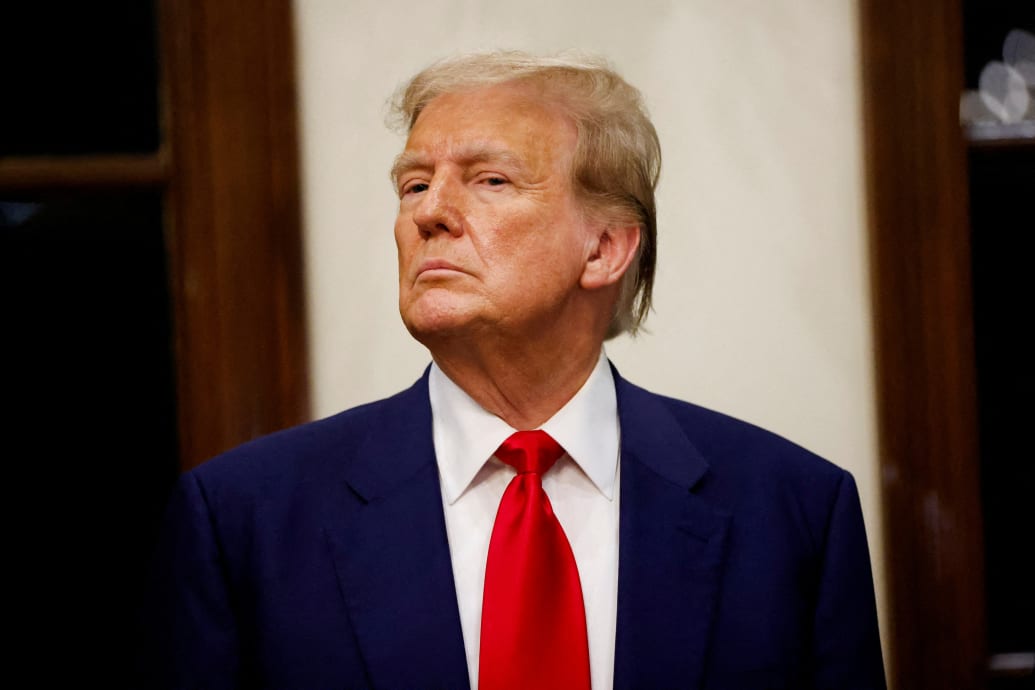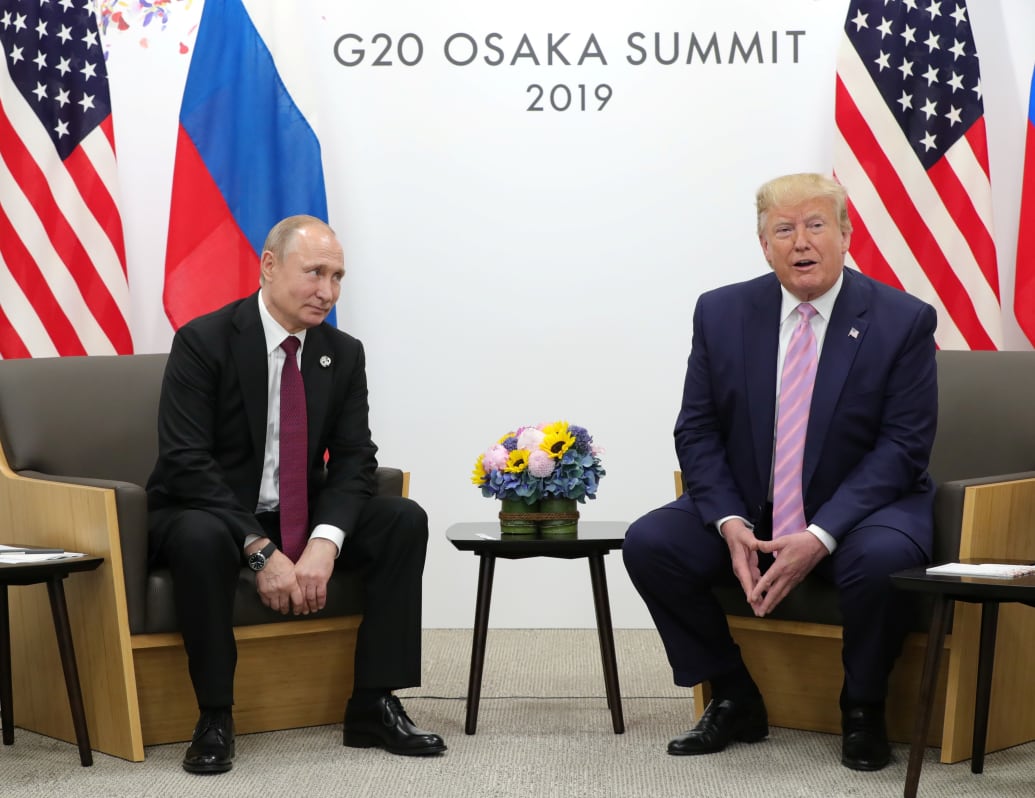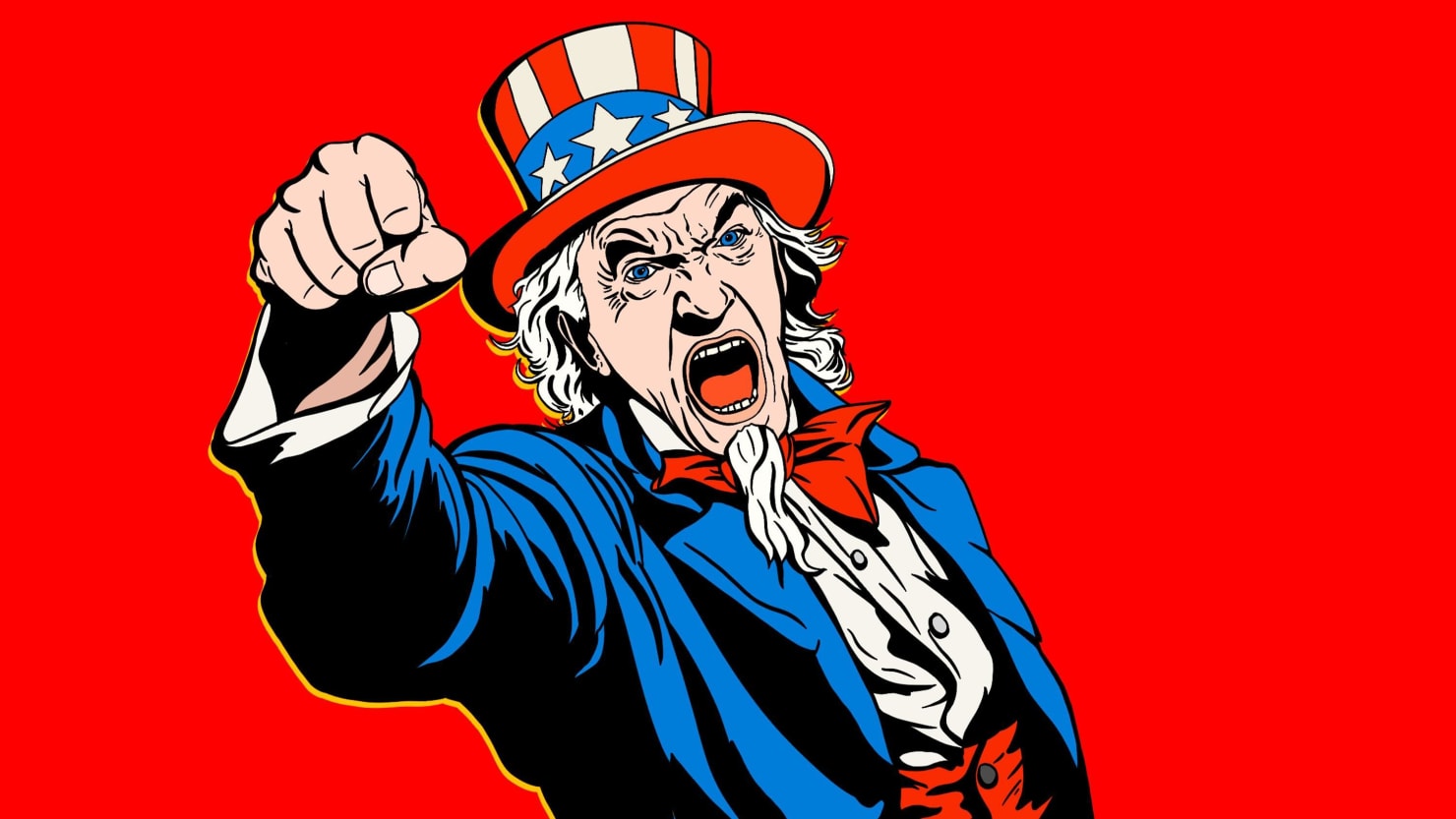It says something about the times in which we live that a second apparent assassination attempt against a former U.S. president is not the most significant or worrisome political violence trend of the moment.
Indeed, given stakes that call for unflinching honesty, we must acknowledge that the intended target of Sunday’s planned but failed attack is actually the source of a greater threat, one that could produces unprecedented conflict in the weeks before or immediately following the upcoming presidential election on Nov. 5.
There is no disputing that a threat to the life of a political candidate is heinous. We are fortunate that law enforcement authorities spotted accused would-be shooter Ryan Routh before he had a chance to fire a shot at Republican presidential nominee Donald Trump. Routh was apprehended 40 miles north of the golf club at which he had apparently intended to attack Trump. Now in custody, his motives are unclear but it has already been established that he is a man with right-wing leanings, a record of erratic behavior, and past run-ins with the law.
Vice President Kamala Harris responded the first reports of the foiled assassination with an appropriately unequivocal statement. “I will be clear. I condemn political violence. We must all do our part to ensure this incident does not lead to more violence.”
Trump’s response and that of those close to him offered a chilling reminder that he does not take the same view. In an interview on Fox on Monday, Trump accused Harris and current president Joe Biden of being the reason his life was being put at risk. “Their rhetoric,” he said, “is causing me to be shot at when I am the one who is going to save the country and they are the ones that are destroying the country.”

Donald Trump attends the 2024 Senior Club Championship award ceremony at his Trump International Golf Club in West Palm Beach, Florida, U.S. March 24, 2024.
Marco Bello/File Photo/Reuters
The inflammatory language from Trump echoed an approach he ultimately took in the wake of the July 13 attack that took place at a political rally in near Butler, Pennsylvania. Trump and others in the MAGA orbit sought at the time to assert that it was President Biden and Democrats who had put him in danger by fueling what House Majority Leader Steve Scalise called “ludicrous hysteria” about Trump.
There was, of course, nothing ludicrous back then about asserting that Trump represented a threat to democracy or suggesting that he had promoted violence as he had in front of the entire nation on January 6, 2021. But Trump’s suggestion that somehow the Democrats were to blame for two attacks by MAGA sympathizers rang even more hollow following the events of a week in which Trump, his running mate JD Vance and others in the GOP have actively sought to fuel violence against immigrants in Springfield, Ohio and elsewhere.
Trump’s repetition during the July 10 presidential debate of a lie promoted by Vance and others suggesting that Haitian immigrants in Ohio were eating dogs and cats of local residence was bad enough. But when pressed to retract the obvious and inflammatory falsehood, Trump refused to do so. His response, like his response in the wake of each of the alleged assassination attempts, was a calculated effort to raise tensions and make future violence more likely.
Following threats against Springfield area schools that have forced them to close down and conduct classes remotely, Trump denied any knowledge of those exacerbating tensions in the community and repeated his focus that the real problem was that influx of “illegal migrants.” (The Haitians living in Springfield are, according to reliable reports, in the U.S. legally.)
But the truth is that not only was Trump’s amplification of the lie about eating cats and dogs the proximate cause for the threats in Springfield, once again, as on Jan. 6, his call to action led to the mobilization of his traditional allies in the white supremacist community including the Proud Boys. This included distribution of hateful literature that was grimly reminiscent in every respect of the work of the Nazis in 1930s Germany. The type font was the same. The language was the same. It called for the expulsion of foreigners. It described them as “filth.”
Trump also got a revolting little shot of help from a man he has said could be a member of his cabinet, Elon Musk, friend of race-baiters everywhere, who tweeted “And no one is even trying to assassinate Biden/Kamala.” Musk later took the post down and said he was joking. But jokes like that usually lead to visits from the Secret Service because people who make jokes like that are, like Musk, often dangerous.
This is not an isolated incident, of course. Trump has dined with Nazi sympathizer, Nick Fuentes, kept a volume of Hitler speeches by his bed (according to his first wife), regularly embraced and defended white supremacist groups (as the VP pointed out during the debate), and even recently hosted a neo-Nazi/Jan. 6 rioter at his Bedminster golf club.
Trump has targeted immigrants since he first descended his gold escalator at Trump Tower when announcing his candidacy and, as right wing thugs have throughout history, sought to blame them for America’s ills.
And once again, on Monday, Trump posted anti-immigrant rant with the clear intent of exacerbating the current tensions in the country. He wrote: OUR BORDERS MUST BE CLOSED, AND THE TERRORISTS, CRIMINALS AND MENTALLY INSANE, IMMEDIATELY REMOVED FROM AMERICAN CITIES AND TOWNS, DEPORTED BACK TO THEIR COUNTRIES OF ORIGIN. …THE WORLD IS LAUGHING AT US AS FOOLS, THEY ARE STEALING OUR JOBS AND OUR WEALTH. WE CANNOT LET THEM LAUGH ANY LONGER. MAKE AMERICA GREAT AGAIN!” https://twitter.com/atrupar/status/1835717895323517374
At the core of the message was Trump doing the opposite of Harris in the wake of the shooting. She sought order and peace. He fanned the flames of division and violence. He wrote “The bullets are flying, and it will only get worse!”
Not only does this caustic language spread like acid at the foundations of peaceful society in the U.S., it serves a purpose that autocrats have long recognized. By finding a scapegoat and amplifying the threat it may pose, it allows them to justify taking drastic action, including very often in cases from Hitler to Trump favorite Viktor Orbán, gutting democracy and granting extraordinary powers to a racist, xenophobic thug-in-chief.

President Vladimir Putin, left, and then-U.S. President Donald Trump, Osaka, Japan June 28, 2019.
Sputnik/Mikhail Klimentyev/Kremlin via Reuters
Actively supporting and defending violence that tears at the fabric of American society has also long been a Trump and MAGA tactic. From the march in Charlottesville to the far right’s efforts to inflame further the Black Lives Matter demonstrations of 2020 to January 6, 2021, it is yet another page from the Trump playbook. But as the stakes rise for Trump and his political fortunes slip and that coincides with a ratcheting up of Trump’s rhetoric, the prospect for a period of unprecedented conflict looms over the remainder of campaign 2024 and, possibly, should the election results be contested, its aftermath.
It is for this reason that I argue that while the assassination attempt must be taken seriously and all our candidates must be protected, we must also recognize that there is the possibility of spreading political violence of a sort this country has not seen since the 1960s…of a sort we have never seen as part of a political campaign period.
Worse still is the fact that this should not be seen merely in a domestic context. Many of the worst rumors and efforts at promoting division during this campaign (and during past Trump campaigns) have been supported actively by Russian intelligence and other foreign operators who seek to weaken the U.S. via their amplification. Vladimir Putin has almost as much riding on this presidential contest as does Donald Trump.
“As election day nears, with Trump willing to do anything to win and thereby stay out of jail, we face a profoundly precarious juncture in our history.”
— David Rothkopf
If Trump wins, Putin will get his way in Ukraine. If he doesn’t, Putin will face prolonged resistance from Ukraine and the West.
For that reason, as part of his hybrid warfare efforts in Ukraine and across Europe—which regularly involve disinformation and active measures to influence political outcomes and weaken Western institutions—Putin is and will be Trump’s ally in the effort to foment conflict in our streets.
Trump’s debate night comments about the cats and dogs and his reluctance that evening to express support for Ukraine are directly related. They are all part of the Trump-Putin strategy for the remainder of this election season. The heat is clearly rising, and neither Trump nor his allies are pulling back and calling for cooler heads to prevail.
Immigrant populations in the U.S. are growing more uneasy. The far right is ramping up its rhetoric. And therefore, as election day nears, with Trump willing to do anything to win and thereby stay out of jail, we face a profoundly precarious juncture in our history—one in which even assassination attempts are overshadowed by the prospect of violence that is even more widespread and politically consequential for Americans from coast-to-coast.




![Tyson Foods Plant [Photo: Food Manufacturing]](https://southarkansassun.com/wp-content/uploads/2023/08/iStock_1185520857__1_.5e441daa51cca-600x337.jpg)







![Silverado Senior Living Management Inc. [Photo: Los Angeles Times]](https://southarkansassun.com/wp-content/uploads/2023/10/download-6-4-600x337.jpg)

![China's Wuhan Institute of Virology [Photo: Nature]](https://southarkansassun.com/wp-content/uploads/2023/09/d41586-021-01529-3_19239608-600x337.jpg)
















